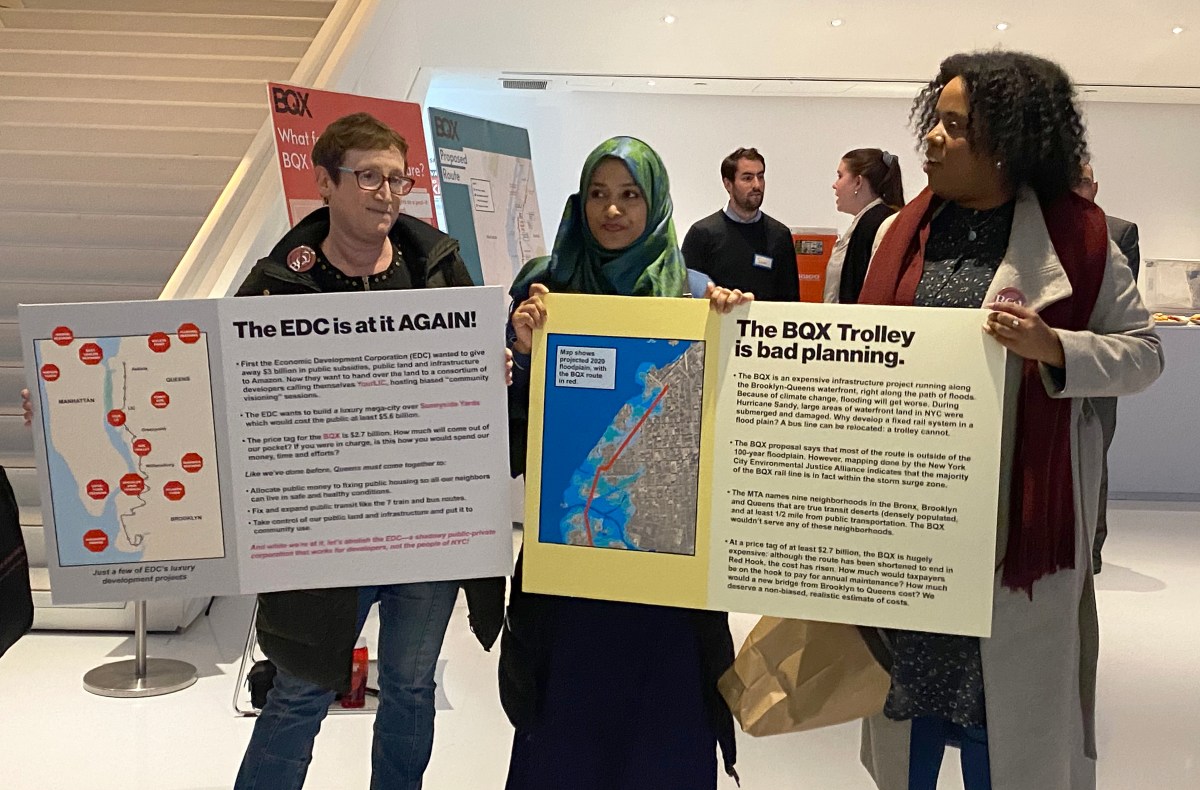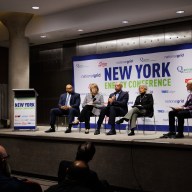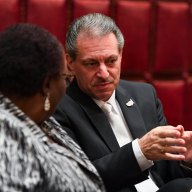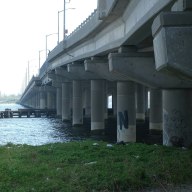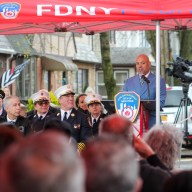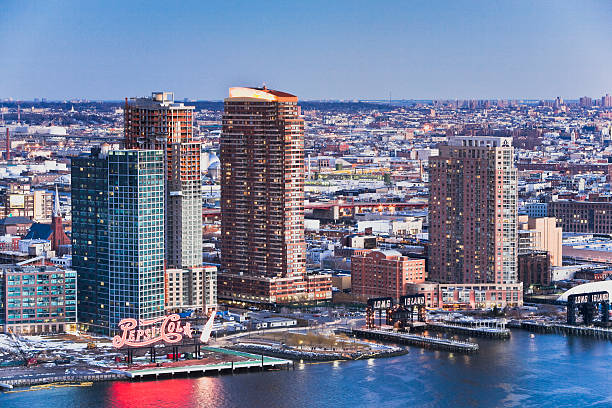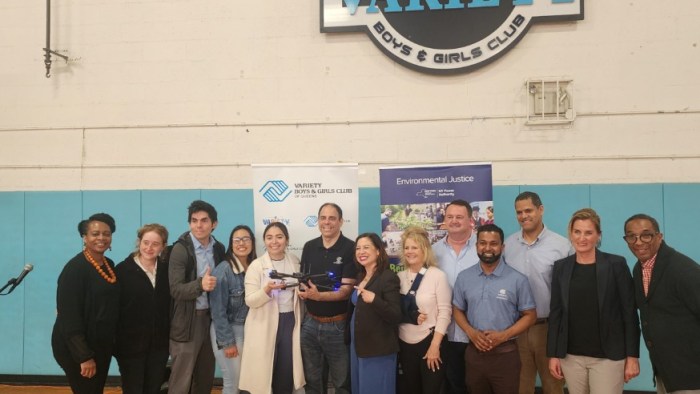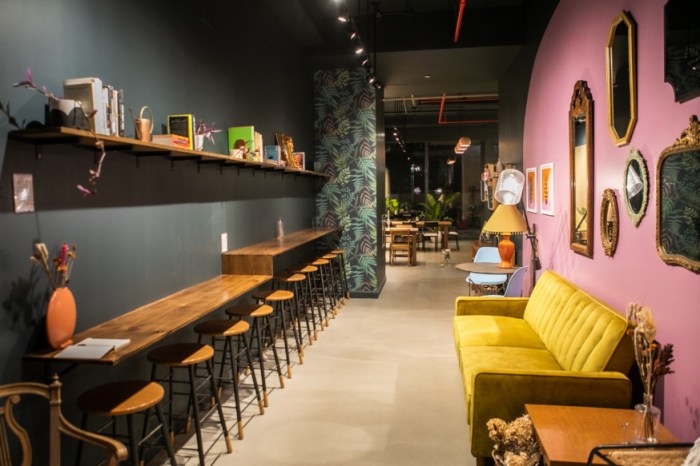Justice for All Coalition (JFC) members chanted “Buses yes, BQX no,” during a BQX workshop at the Museum of the Moving Image, hosted by the Economic Development Corp. (EDC) and the New York City Department of Transportation, on Tuesday, Feb. 25.
The two-hour long event had more than 80 attendees, and was the first workshop the EDC and NYC DOT hosted in Queens (there were two prior ones in Brooklyn) regarding the BQX, a $2.7 billion project led by the city that would create a streetcar system along an 11-mile corridor from Astoria to Red Hook, Brooklyn.
The museum’s main lobby was laid out with snacks, posters and EDC facilitators while another room had tables for facilitators who talked to people about the current plans for BQX and took down notes with their suggestions.
Around 7 p.m., three members of the Justice for All Coalition stood in the middle of the museum’s lobby with posters that delineated why the project is “bad planning.”
“One of the big problems is that the BQX isn’t really the idea of transit planners and transit experts, it’s the idea of real estate developers,” Jenny Dubnau, an artist and JFC member, told QNS. “Gentrification, displacement and more luxury towers are baked into the BQX trolley.”
Dubnau cited a 2016 New York Daily News article, in which they reveal that a number of developers with projects along the proposed streetcar line donated to Mayor Bill de Blasio’s administration, who later began to push for the project. One of those donors was Brooklyn developer Jed Walentas, who created Friends of the Brooklyn Queens Connector in February 2015.
Some of the concerns raised by JFC and other Astorians is the way the project will be funded.
According to Rebecca Gafvert, vice president of neighborhood strategies at the EDC, the EDC and city are in conversations with the Federal Transit Administration to fund half of the project with federal government money, while the other half will be paid for by the city with the implementation of value capture as well as other private sources.
Value capture will involve increasing tax revenue and raising property tax values along the route.
One Astoria landlord at the workshop said that because of that, he might have to raise rent for his tenants.
Many people also asked what the fare for the streetcar will be. Right now, the EDC wants to make it “the most attractive option for people,” so they anticipate a “full fare integration,” which means it’ll cost the same as a MetroCard ($2.75) and will allow riders to make free transfers between subway and buses.
But JFC is concerned that the full fare integration isn’t guaranteed.
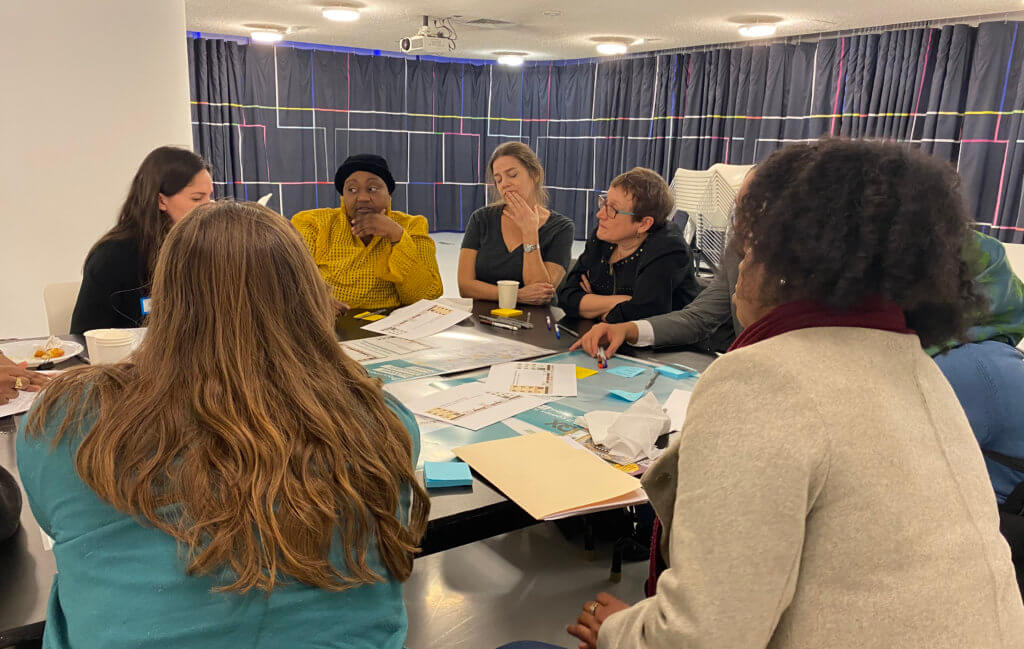
“They say, ‘Oh, yeah, we’re working on it, we don’t really know.’ But if you don’t know that it’s going to cost an extra fare or not, how can you say that this is about transit equity? Because that’s what de Blasio and [Christopher] Torres are saying,” Dubnau said.
Torres, a Brooklyn resident and new executive director of Friends of the BQX, attended the Astoria workshop and was by the JFC members during their demonstration.
“I think that the project’s complicated,” Torres told QNS. “There’s plenty of information that’s a little bit difficult to get and takes a lot of time and effort to really understand a project of this magnitude. And I think a lot of people just sort of hear about it, and because it’s so ambitious and because it’s so bold and complicated people are just like, ‘I don’t know whether this is good or bad.’ I think a lot of times it’s easy to be afraid of big, bold ideas.”
Mary Jobaida, who’s challenging Cathy Nolan for the District 37 Assembly seat, joined the JFC in calling for better bus service in the area instead of a streetcar.
Jobaida and JFC believe that there needs to be more coordination between the city and the MTA’s current proposal — which is planning to take away the Q103 in Astoria.
“They’re taking away buses at the same time that they want to put this thing,” Dubnau said. “If you really want to talk about transit equity, you’re going to build something further out in Brooklyn and Queens, because that’s where the real transit desert is.”
They also cite the New York City Environmental Justice Alliance’s map of projected 2020 floodplain of Astoria and Long Island City, which demonstrates that the current route for the BQX is within the storm surge zone.
Connie Murray, a longtime Astoria resident who has been to a number of EDC workshops for Your LIC, Sunnyside Yards and now the BQX, said that the route as it is right now will just be “Disneyland for Instagramers.”
Murray believes that the EDC needs to have better community engagement where the environment is “less controlled” like a town hall, so that community members and the facilitators could have real conversations about the project.
Gafvert told QNS that they will release a revised draft of the BQX line in May, and will then begin their environmental review process which will take up to two years.
“This is a really important moment to get people’s feedback, because we’re actually anticipating making small changes to the route based on what we’ve heard from everyone and some additional engineering and planning work that we’re doing before the environmental review,” Gafvert said.
Friends of the BQX gave QNS a statement regarding the concerns raised by JFC and residents.
“We can all agree that the lack of outer borough connectivity is one of the greatest and most long standing challenges facing the city’s transportation infrastructure. And as an organization, we are supportive of improving all mass transit linking Brooklyn and Queens, including the bus service. But we also know that the BQX accomplishes what other modes of transportation cannot,” their statement read. “For years, communities along the route have been overlooked for needed upgrades, deepening their reliance on a failing and unreliable bus network and restricting their access to emerging job hubs in Brooklyn and Queens. The BQX is specifically and thoughtfully designed to offer efficient, reliable and affordable mass transit that rethinks how our transportation network works in New York City.”
The next BQX workshop in Queens will take place on March 10 in the CUNY Law School at 2 Ct Square W in Long Island City, from 6:30 to 8:30 p.m.

